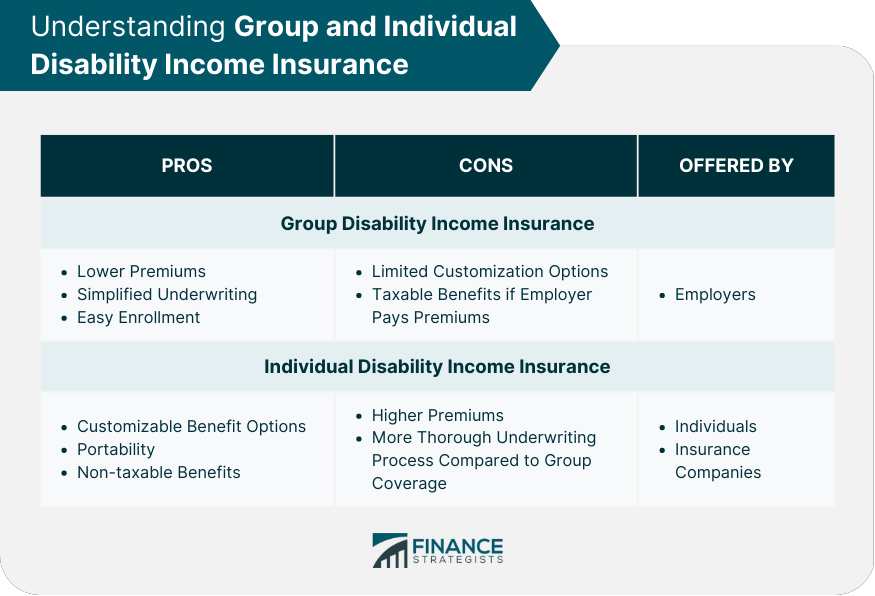Why You Need Disability Insurance and How It Protects Your Income is a critical topic that often goes unnoticed until it’s too late. Disability insurance serves as a safety net, ensuring that individuals can maintain their financial stability even in the face of unforeseen circumstances that may prevent them from working. In a world full of uncertainties, understanding the importance of this type of insurance can empower you to make informed decisions that safeguard your livelihood and well-being.
From the basics of what disability insurance covers to the different types available, this discussion aims to shed light on how this coverage can be a game-changer in protecting your income during challenging times. By exploring the nuances and benefits of disability insurance, you will gain insights into why it’s not just an option but a necessity for anyone who relies on their earnings for everyday living.
In the modern world, where technology and human interaction intertwine seamlessly, the way we communicate and share information has transformed dramatically. As we delve into the intricacies of digital communication, it becomes evident that the evolution of this medium has not only reshaped our interactions but has also fundamentally altered our perceptions of time, distance, and connectivity.One of the most significant changes brought about by digital communication is the speed at which we can exchange information.
In the past, sending a letter could take days or even weeks, depending on the distance between the sender and the recipient. Today, an email or a direct message can reach someone on the other side of the globe in mere seconds. This instantaneous nature of communication has not only made it more convenient but has also led to an expectation of immediacy in our interactions.
The phrase “I’ll get back to you soon” has transformed into an unspoken obligation to reply within minutes, if not seconds.Moreover, the ability to communicate at any time, from virtually anywhere, has led to a blurring of boundaries between personal and professional lives. Many people find themselves checking work emails during dinner or responding to messages late into the night.
This phenomenon, often referred to as “always-on” culture, raises pertinent questions about work-life balance and the importance of disconnecting to maintain mental health and well-being. The constant connectivity can lead to feelings of stress or burnout, as individuals struggle to switch off from their professional responsibilities.Alongside this immediacy, digital communication has also revolutionized the ways in which we express ourselves.
The emergence of social media platforms has given rise to a new form of language that blends words, images, and even videos to convey messages. Emojis, GIFs, and memes have become integral parts of our daily communication toolkit, enabling us to convey emotions and humor in ways that traditional text alone cannot capture. This evolution of language is not merely a trend; it reflects a broader cultural shift towards visual storytelling and succinct expression.Furthermore, the democratization of information through the internet has empowered individuals to share their voices and perspectives.
With just a smartphone and an internet connection, anyone can become a content creator, sharing their thoughts and experiences with a global audience. This shift has profound implications for social movements, activism, and the way we engage with current events. The ability to amplify marginalized voices and foster community through online platforms has led to significant societal changes, from the #MeToo movement to climate change activism.However, it is essential to acknowledge that this newfound freedom of expression comes with its challenges.
The rapid spread of information can lead to the dissemination of misinformation and fake news, which can have serious consequences for public opinion and trust in institutions. As consumers of digital content, it has become increasingly vital to develop critical thinking skills to discern credible sources from unreliable ones. Media literacy has emerged as an essential skill for navigating the complexities of the digital landscape, equipping individuals with the tools needed to engage thoughtfully with the information they encounter.In addition to these societal shifts, the rise of digital communication has also transformed the way businesses operate.
Companies are leveraging social media and online platforms to engage with customers, gather feedback, and promote their brands. This shift towards a more interactive and transparent approach has reshaped customer service, with many consumers now expecting prompt responses to inquiries or complaints via social media channels. Businesses that fail to adapt to these expectations may find themselves at a disadvantage in today’s competitive landscape.Moreover, the rise of remote work, accelerated by the COVID-19 pandemic, has underscored the importance of effective digital communication within teams.
As employees connect from various locations, collaboration tools and platforms have become indispensable for maintaining productivity and fostering a sense of connection. The ability to hold virtual meetings, share files in real-time, and communicate seamlessly has transformed the traditional workplace dynamic, prompting a reevaluation of how teams can operate efficiently in a digital-first world.Yet, despite the myriad advantages that digital communication provides, it is crucial to recognize the potential downsides.
The prevalence of online interactions can lead to feelings of isolation and loneliness, as face-to-face connections become less frequent. The phenomenon of “phubbing,” or snubbing someone in favor of a smartphone, highlights the growing divide between personal relationships and digital distractions. Striking a balance between online engagement and meaningful offline interactions is essential for fostering genuine connections in our increasingly digital lives.In conclusion, the landscape of communication has undergone a seismic shift, driven by technological advancements and the rise of digital platforms.

The speed, accessibility, and expressive potential of digital communication have transformed the way we connect with one another and navigate our personal and professional lives. As we embrace these changes, it is vital to remain mindful of the implications for our relationships, mental health, and societal dynamics. By cultivating a healthy relationship with digital communication, we can harness its power to foster connection, understanding, and positive change in our world.



